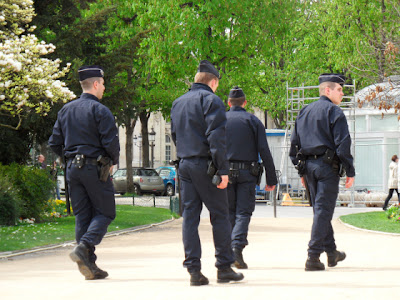 |
| Spires of pink-purple Stachys monieri 'Hummelo' (Alpine betony). Gardens of Remembrance at The Battery, New York, NY. June 2011 |
'Hummelo' is not your ordinary stachys. The crinkled green foliage is lush and in my zone 7b garden, it never dies back completely in the winter. Like many perennials, you'll know to divide it when a shallow pit (not quite a donut hole) appears in the middle. Suitable for zones 4-9, I find this perennial likes rich, well-drained soil and mostly sun. When it needs water, the plump mounds look totally deflated. Just add water to the base. A nice size of around 18 inches high (in bloom) and 15 inches wide, makes this a suitable plant for small spaces. Rabbits and deer have never bothered my 'Hummelo'. It make take a year or two for the perennial to begin producing the lovely purple spires.
Designer Piet Oudolf used an incredibly thick and wide mass planting of 'Hummelo' in his design. I can't begin to estimate the number of plants used in his vignette, but I think it's safe to say more than thirty!
Echinacea (coneflowers) and two colors of monarda (bee balm) are used as companions en masse to add to the breadth and depth of the garden island vignette. Nepeta racemosa 'Walker's Low' is added for the grey foliage and lacy, hazy blue flowers. I have experience with this nepeta. Another variety in my garden, Nepeta faassenii 'Six Hills Giant' is a possible substitution. In fact, I have that nepeta grouped with my 'Hummelo', ice plant and monarda 'Blue Stocking'. But, I digress. Let's get back to The Battery Gardens.
 |
| Nepeta racemosa 'Walker's Low' provides lacy blue blooms that fall onto the coneflowers, backed by stachys 'Hummelo'. |
 |
| Two colors of monarda (bee balm) rise behind the shorter stachys 'Hummelo'. |
 |
| The big picture of the perennial vignette with Stachys monieri 'Hummelo' at the core. |
There are six echinacea (coneflower) varieties used in the Gardens of Remembrance, but select a variety that grows well in your zone to achieve a similar effect. There were no plant markers that I could locate, so I cannot say with certainty which varieties are used in the designs.
The purpurea varieties in the gardens include 'Rubinstern' (a favorite in my garden), 'Leuchstern' and the native purple coneflower. Echinacea pallida (pale coneflower) and echinacea tennesseenis are two North American natives also in use in different locations.
Of the monarda, there are seven varieties listed in The Battery Plant Database. The red one in the photos is most likely monarda didyma, perhaps a 'Jacob Cline' though it is not included in the database. I grow 'Jacob Cline' and it is a stellar performer, growing over 4 feet, but needing more moisture than the wine-red 'Raspberry Wine'.
The pale pink bee balm looks lighter than the varieties listed by the Conservancy. Perhaps it is the 'Marshall's Delight' based upon the color description.
What I like, other than the scale and simplicity of the design, is that the plant choices are easy to maintain and fairly easy to find. Stachys monieri 'Hummelo' may be the most difficult to locate, though here are some online sources (at the time of this story):
Digging Dogs Nursery(California)
High Country Gardens (New Mexico)
Bluestone Perennials(Ohio)
LazySSFarm(Virginia)
Other aspects of the gardens that I find to be positive for home gardeners—the bee balm spreads quickly to fill in large space; the purple coneflowers can be grown from seeds; the stachys and nepeta can be easily divided—making the design achievable on a small budget.
Finally, this design is attractive to humans while attracting beneficial pollinators. That's a lot of positive reasons to create your own design—inspired by Piet Oudolf.
Oudolf's Stellar Perennials (Part 3)
| Words and photos by Freda Cameron, Defining Your Home, Garden and Travel. Deer and rabbit resistance varies based upon the animal population and availability of food. All company or product or patented names mentioned are registered trademarks, copyrights, or patents owned by those respective companies or persons. |




























